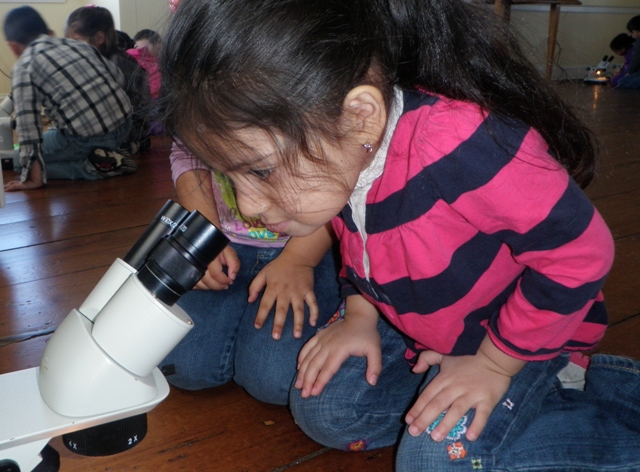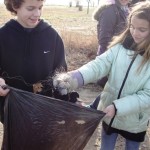Feb. 2012 – SoundWaters Youngest Coastal Scientists
Do you know the meaning of brackish, regeneration, camouflage? Just ask any preschooler who participates in SoundWaters SoundKids program and you’ll be surprised at the number of correct answers you’ll get from these 3- and 4-year-olds.
Once a week, for seven weeks over the fall and winter, SoundWaters educators have been visiting 15 classrooms in 8 schools and community centers, offering 300 youngsters experiences and activities that improve understanding and aid development of scientific inquiry skills. The curriculum is designed to meet Connecticut’s pre-K through kindergarten content standards and expected performances.
The teaching method is creative, innovative, and by all standards, highly successful. At each session, educators bring a live animal, simple science experiments, stories, and arts and crafts activities that highlight certain concepts and characteristics associated with the animal of the day. For example, on the day the children learn about camouflage, they observe how the cream-colored flounder hides in the sand to protect itself. On regenerate day, they use their arms to demonstrate how a detached arm of a sea star can grow back.
Throughout the hour-long sessions, educators ask questions that encourage the youngsters to touch and explore the characteristics of the animals, to make observations, and to use all their senses. What does it feel like? What color is it? How does it move?
When the children arrive at SoundWaters Coastal Center for the culminating event ? a visit to the Teaching Aquarium and coastal sites to see all the animals ? they easily remember their past lessons. During one such session, when asked what animals they saw in their classroom, little hands shot up with examples: “Horseshoe crab! Spider crab! Flounder! Terrapin!” And what kind of water do they live in? “Brackish,” replied a chorus of tiny voices. “Fresh and salt water.”
Throughout their K-12 schooling, SoundWaters students will have multiple opportunities to observe, explore, touch, examine and test the species and habitats of Long Island Sound. These youngest of SoundWaters students have begun a foundation that will serve them well.



